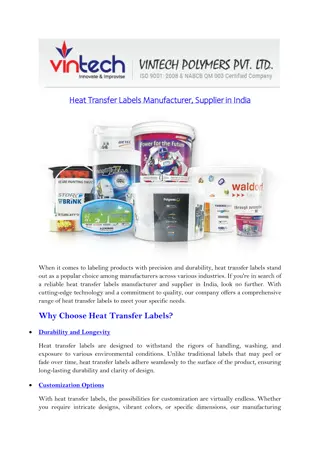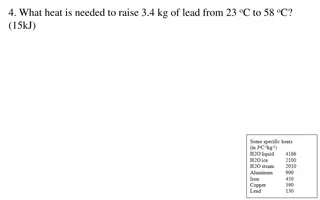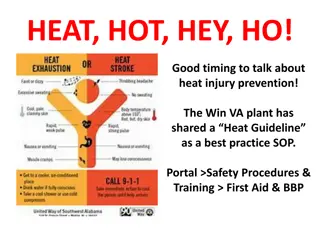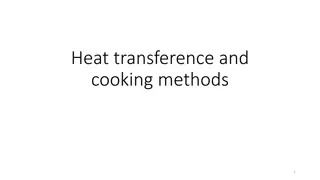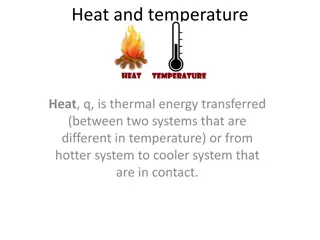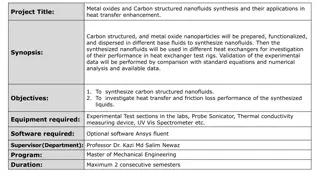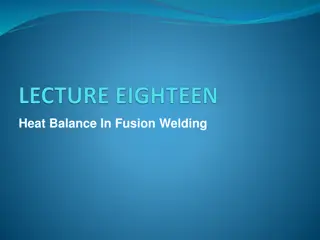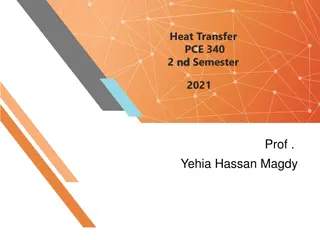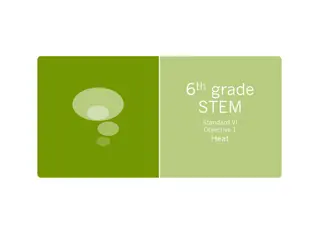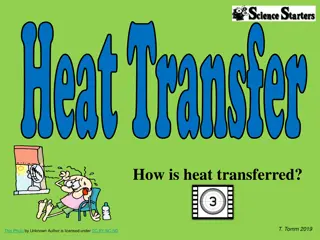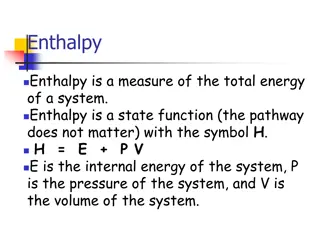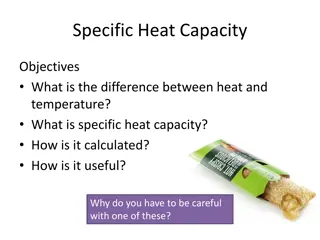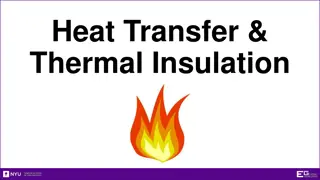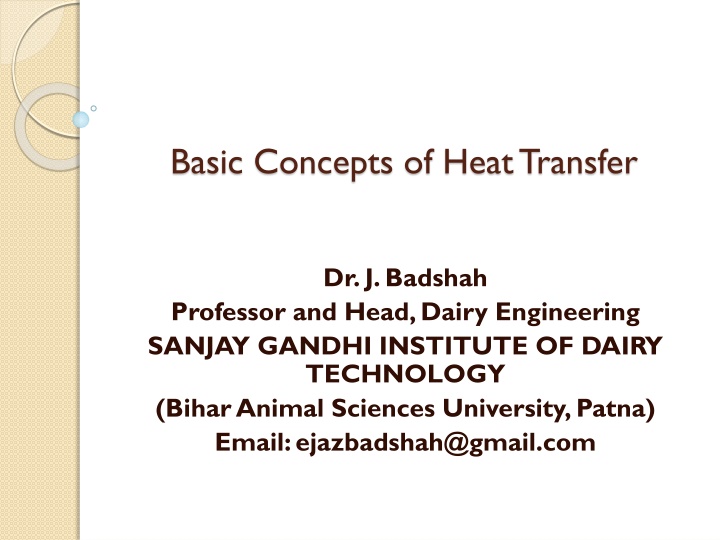
Basic Concepts of Heat Transfer and Thermodynamics
Explore the fundamental principles of heat transfer and thermodynamics including thermodynamic equilibrium, properties of systems, thermodynamic terms, temperature measurement methods, calibration, units of heat and temperature, and more. Enhance your knowledge in this essential area of science and engineering.
Download Presentation

Please find below an Image/Link to download the presentation.
The content on the website is provided AS IS for your information and personal use only. It may not be sold, licensed, or shared on other websites without obtaining consent from the author. If you encounter any issues during the download, it is possible that the publisher has removed the file from their server.
You are allowed to download the files provided on this website for personal or commercial use, subject to the condition that they are used lawfully. All files are the property of their respective owners.
The content on the website is provided AS IS for your information and personal use only. It may not be sold, licensed, or shared on other websites without obtaining consent from the author.
E N D
Presentation Transcript
Basic Concepts of Heat Transfer Dr. J. Badshah Professor and Head, Dairy Engineering SANJAY GANDHI INSTITUTE OF DAIRY TECHNOLOGY (Bihar Animal Sciences University, Patna) Email: ejazbadshah@gmail.com
Basic Concepts of Thermodynamics and Heat Transfer System & Boundary: a. Isolated, b. Open, c. closed, d. Adiabatic, e. Homogeneous system e.g. Water plus Niitric acid f. Heterogeneous system e.g. Water plus Steam or Ice plus Water Thermodynamic Equilibrium : a. Thermal Equilibrium, b. Mechanical Equilibrium c. Chemical Equilibrium Properties of the system a. Intensive Properties b. Extensive Properties
Thermodynamic Terms State :a condition of the system at any instant of the time and it says each property has a single value at each equilibrium state. Process:It occurs when system undergoes a change instate a. Non-Flow Process : Closed systems undergo non-flow process b. Flow Process: Mass is entering and leaving through the boundary of an open system as well as heat or work crossing the boundary of the system Cycle , Point Function Properties and Path Function Properties Heat and work are path function properties, However temperature,Volume,Pressure are point function properties.
Temperature, Pressure and Energy Temperature Absolute Temperature : a. When no kinetic energy left in any molecule of substance/gas and gas will not occupy any volume b. Absolute temperatur = Thermameter reading in C + 273 c. Absolute temperature = 0 A or 273 C Methods to measure temperatureand calibration of Thermometer a. Line above sulphur boiling uses Platinum Rhodium thermocouples b. Line below sulphur boiling uses Platinum Resistance Thermometer
Calibration Table for thermameter Gold Melting : 1316.16 A = 1063 C Silver Melting : 1233.96 A = 960.80 C Sulphur Boiling : 717.76 A = 444.60 C Water Boiling : 373.16 A = 100 C Melting point of Ice: 273.16 A = 0 C Oxygen Boiling Point :90.19 A = - 182.97 C No K.E. left in molecule : 0 A= - 273.16 C
Units of Heat and Temperature Heat: A transient quantity which only appear at a boundary while a change is taking place Units of Heat: Mean gm calorie (quantity of heat required to raise the temperature of 1 gm of water from 0 to 100 C divided by 100) Kg calorie : 1000 gm calorie B.T.U. (quantity of heat required to change the temperature of 1 lb water from 59.9 to 61.7 F. CHU (quantity of heat required to change the temperature of 1 lb of water by 1 C at 1 atm. Pressure) C + 273.16 = Kelvin C/5 = (F-32)/9 = (K -273)/5 = (Reumer -492)/9
Energy, Work and Heat Energy a. Stored Energy: Internal Energy (chemical energy, Electrical Energy) & Mechanical Energy ( Potential energy , Kinetic energy) b. Energy in Transition : ( Heat and work) Work a. + iveWork : Output work i.e. work done by the system b. _ veWork : Work Input to the system i.e. work done on the system Heat a. +ive Heat: Heat received by the system b. -ve Heat : Heat rejected by the system


